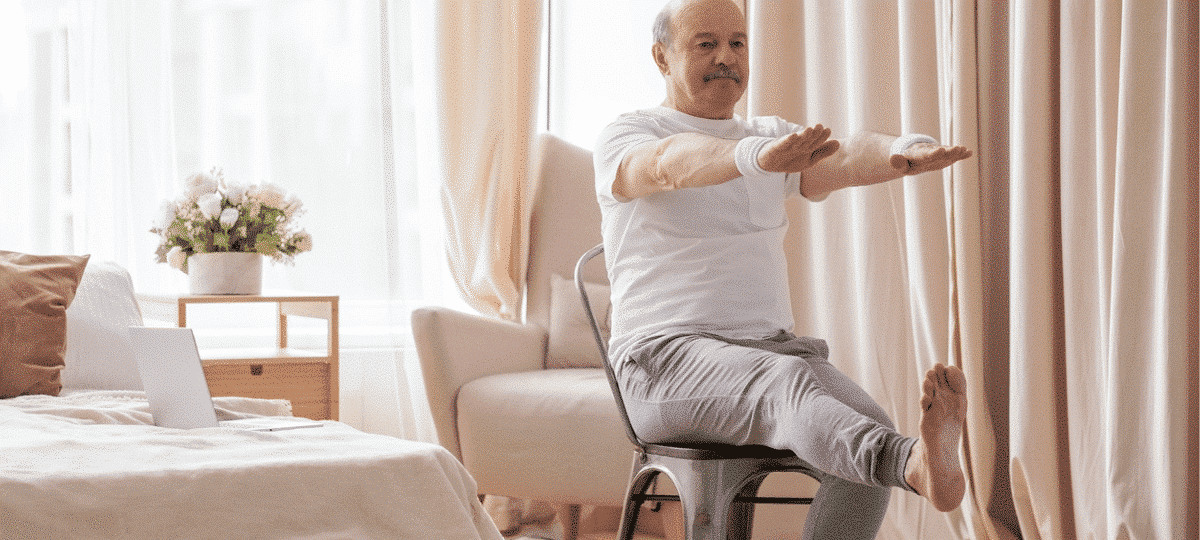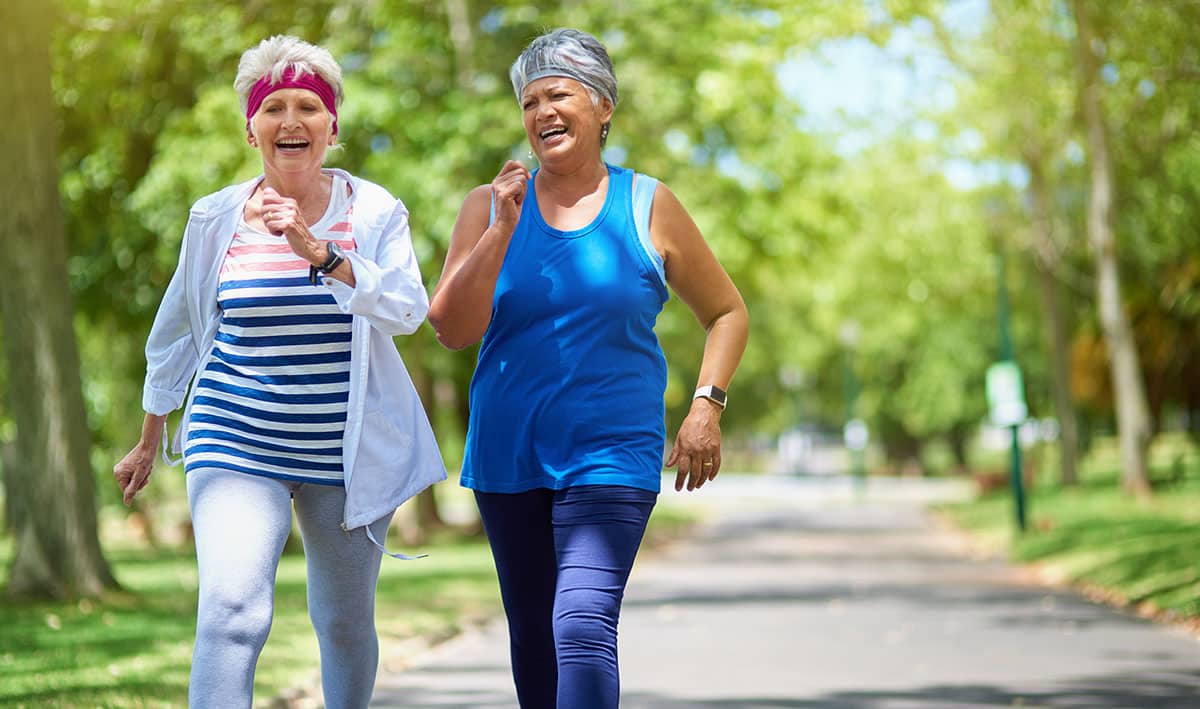Yoga is a form of exercise that’s been around for many, many years. Its history is rooted in the idea that yoga offers a path toward enlightenment through a connection to all people and all things. In modern times, it’s become more of a lifestyle — both as an effective form of strength training and as a trendy form of exercise.
But is yoga a good form of exercise for older adults?
Experts confirm that, when practiced under the guidance of a qualified instructor, yoga is actually a great method of exercise that offers countless benefits for seniors.
“There are a lot of myths out there about yoga, but the reality is, yoga can be adapted to any individual skill level, regardless of age or experience,” says Jackie Smith, a fitness and health food blogger and certified yoga instructor in Florham Park, NJ. “Seniors may feel overwhelmed because there are so many different types of yoga that they don’t know where or how to begin. The key to practicing yoga, though, is understanding that it can be modified to your body type, age, physical limitations, and other factors. Yoga really is for everybody.”
Let’s look more closely at some of the major benefits of yoga for seniors:
Yoga improves balance and mobility.
As they get older, many seniors adopt a more sedentary routine. As a result, they sit for multiple hours during the day — which stiffens muscles and limits movement. Even practicing yoga 15-30 minutes a day can improve coordination, balance, and mobility — which also helps to reduce injury and falls.
Yoga is a major mood-booster.
As they age, many seniors suffer from fatigue, anxiety, insomnia, and depression. Yoga is proven to be an effective means of stress reduction. In fact, studies have shown that “by improving circulation in the endocrine glands, a consistent yoga practice enhances the functions of hormones that play a primary role in the physiology of depression. This results in a reduction in depression and improved overall mood.”
Yoga helps manage chronic pain.
According to the National Institutes of Health’s (NIH) National Center for Complementary and Integrative Health, “Research has been done on yoga for several conditions that involve pain. Studies of yoga for low-back pain and neck pain have had promising results, and yoga is among the options that the American College of Physicians recommends for first-line treatment of chronic low-back pain. Preliminary evidence suggests that yoga may also be helpful for tension headaches and knee osteoarthritis pain.”
Yoga builds muscle mass.
Older adults lose more and more muscle mass as they age. Yoga practitioners note that stretching, posing, and positioning help to stretch and strengthen your muscles, which is crucial to preventing falls and broken bones.
Yoga improves cognitive function.
An article published by Harvard Medical School states, “Studies using MRI scans and other brain imaging technology have shown that people who regularly did yoga had a thicker cerebral cortex (the area of the brain responsible for information processing) and hippocampus (the area of the brain involved in learn¬ing and memory) compared with non-practitioners. These areas of the brain typically shrink as you age, but the older yoga practitioners showed less shrinkage than those who did no yoga. This suggests that yoga may counteract age-related declines in memory and other cognitive skills.”
Yoga improves physical flexibility.
There is a common myth that you need to be flexible to do yoga but that is a misnomer. In reality, a fundamental aspect of yoga is stretching your body to build and improve flexibility, which helps a person to become more flexible and improve their range of motion.
Are you or a loved one considering taking yoga as an older adult?
Following are a few extra tips for seniors who are considering yoga:
- The AARP has compiled a list of modified yoga poses for people in their 50s, 60s, 70s, and beyond. This is a great resource to familiarize yourself with the basic positions and help you feel more at ease when you take yoga for the first time.
- The National Institutes of Health offers a few reminders for seniors:
- “If you’re new to yoga, avoid extreme practices such as headstands, shoulder stands, the lotus position, and forceful breathing.
- Be aware that hot yoga has special risks related to overheating and dehydration.
- Older adults and people with health conditions should talk with their healthcare providers and yoga instructors about their individual needs. They may need to avoid or modify some yoga poses and practices. Some of the health conditions that may call for modifications in yoga include preexisting injuries, such as knee or hip injuries, lumbar spine disease, severe high blood pressure, balance issues, and glaucoma.”
Are you looking for ways to keep your loved one more active?
One of the many benefits of Independent Living and Assisted Living communities is the breadth of social activities and physical therapy options that are offered to residents. If your loved one has activities or hobbies that they enjoy like yoga, gardening, aerobics or painting (just to name a few) make sure to ask about these when you tour a community. If you’re looking to start a senior living search Medical Alert is here to help—we have teamed up with A Place for Mom which is the leading senior living advisory service in the United States. A Place for Mom’s expert advisors help caregivers and their families find the right senior living options for their aging loved ones through personalized referrals, tour scheduling and move-in support. Their services come at no cost to families as A Place for Mom is paid for by its network of 17,000+ participating communities and home care providers.




